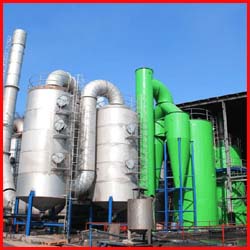


Portable treatment units make untreated sources usable when municipal supply is absent.
They combine intake screening, staged filtration, and disinfection in a compact frame. The goal is simple: reduce microbes, sediments, and dissolved contaminants to safe levels with throughput, when source quality varies.
What a Unit Includes
Most packs contain a raw-water pump, prefilters, a main treatment stage, a disinfecting step, a clean-water tank, and hoses. Housings rated for pressure protect cartridges and membranes. Flow and TDS meters verify performance. Quick-release fittings and color-coded lines reduce errors during setup and breakdown. Discover dependable solutions with a temporary water plant —visit our website now to explore your options!
How Treatment Works
Units layer methods to cover different risks. Sediment filters (5–20 microns) remove grit. Activated carbon treats taste, odor, chlorine, and many organics. Ultrafiltration or microfiltration targets bacteria and protozoa. Reverse osmosis removes most salts and metals, requires pressure, and produces brine. UV or chemical dosing provides final disinfection to inactivate remaining microbes.
Choosing the Right System
Match the unit to your source and use case. Key factors are daily volume, expected turbidity, salinity, pathogen risk, power availability, and weight. For rivers or lakes, filtration plus UV often suffices. For brackish or seawater, choose reverse osmosis. Cold environments require freeze protection. Confirm spare parts and consumable costs fit your budget.
Setup and Operation
Site the unit on stable ground near the source and keep the clean outlet up-slope from the intake. Prime the pump, flush new filters, and let RO membranes run to waste until readings stabilize. Record flow rate and TDS at startup. Maintain a log of hours, pressure drops across filters, and disinfectant residuals where applicable.
Care and Maintenance
Change sediment elements when pressure drop rises or flow falls. Replace carbon by capacity or taste breakthrough. Sanitize housings and tanks on a set schedule. Preserve RO membranes with manufacturer-approved chemicals during long storage. Carry critical spares: o-rings, clamps, bulbs, fuses, and an extra prefilter set to handle unexpected turbidity spikes. Need flexible water treatment? Visit the website now to explore our mobile water treatment plant solutions.
Safety and Quality Assurance
Follow local drinking-water guidelines for microbial safety and residual disinfectant. Use certified components where possible and test periodically with field kits for coliforms and free chlorine. Train operators on chemical handling and electrical safety. A short checklist before every shift prevents cross-connections, dry running pumps, and contamination of the clean tank.
Where These Units Fit
These systems serve field teams, remote clinics, construction sites, camps, and disaster response. They bridge gaps during pipeline repairs and drought. Plan for full lifecycle cost: pump power, filter elements, membranes, UV lamps, and disinfectants. Track cost per liter, not only purchase price. Reliable operations depend more on trained staff and spares than on headline flow claims.
Author Resource:-
Lee Wood writes about sustainable and scalable water and wastewater treatment solutions.
